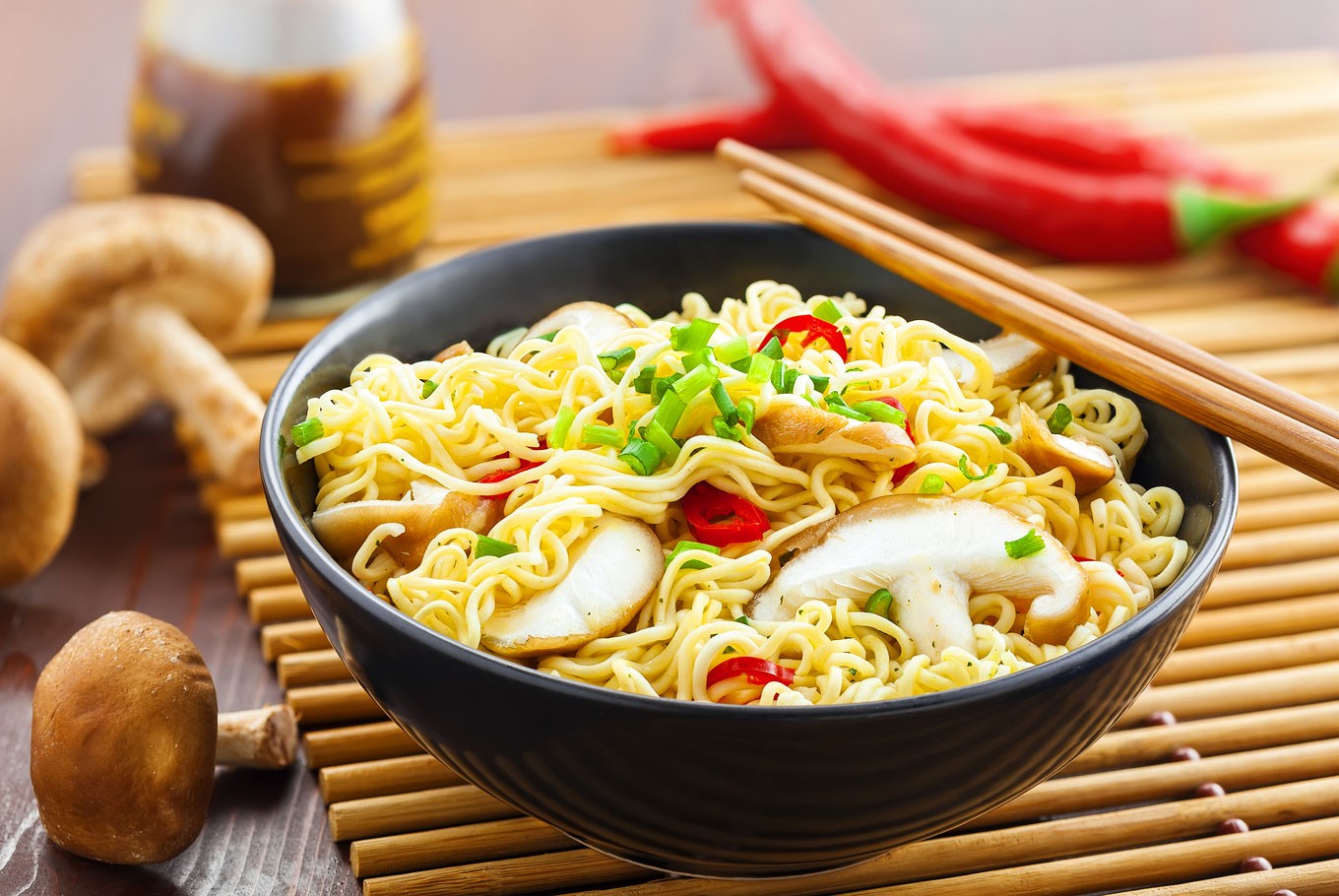Popular Reads
Top Results
Can't find what you're looking for?
View all search resultsPopular Reads
Top Results
Can't find what you're looking for?
View all search resultsRice vs noodles: Which is healthier?
Change text size
Gift Premium Articles
to Anyone
B
oth sources of carbohydrates, sometimes people consume them simultaneously. I bet most people often replace white rice with noodles, with the assumption that the calorie intake is not as high as when you consume rice with side dishes.
Still, what are advantages and disadvantages of eating either carbohydrate?
Know the type of carbohydrate
Before further discussing rice vs. noodles, its best to determine what constitutes a carbohydrate. Carbs are among nutrients needed by the body. They serve as a primary energy source. In the body, carbohydrates are converted to glucose, which then serves as fuel for our body cells. In consuming carbohydrates, according to Harvard TH Chan School of Public Health, the type or quality of carbohydrate consumed is more important than the quantity you consume, so quality over quantity, folks.
In general, there are two types of carbohydrates, simple and complex. Examples of simple carbohydrates are bread, pastries and cakes. These kinds of simple carbohydrates are also known as refined grains, meaning that these foods come from processed grains. The processing of those grains aims to increase the shelf life of the product, but at the same time resulting in many loss nutrients, such as vitamins and minerals.
This type of carbohydrate plays a major role in increasing your body weight and causing a fast increase in your blood sugar level, which may trigger insulin resistance in the long run, leading to diabetes mellitus.
Meanwhile, complex carbohydrates are the healthier type of carbohydrate. Complex carbohydrates usually do not go through processing, or very little. Examples are whole wheat bread, quinoa, brown rice, black rice, cereals, grains, vegetables and fruits. This type of carbohydrate is rich in vitamins, minerals, fiber and phytonutrients. Unlike refined grains, whole grains are still fully intact to their skin, thereby retaining essential vitamins and minerals. It is recommended that people consume more complex carbs.
(Read also: Myths and facts about cholesterol)
Rice vs noodles, which is healthier?
So which is healthier, rice or noodles? Basically they are both sources of carbohydrates. As a comparison, 100 grams of white rice contains 175 calories. The same amount of calories can be found in 50 grams of noodles (dry, uncooked). So for the same amount (eg: 100 grams) noodles will contribute higher calories. But when you ask which one is healthier, then the noodle or rice that you usually consume is more or less the same. Again, the type of the carbohydrate is more important than the intake amount.
Both are products of refined grains
Noodles that we usually consume are the product of processed flour. If the noodles are not produced from whole grains, then they are the product of refined grains. Meanwhile, white rice is indeed a refined grain. Therefore, from the types we can conclude that both rice and noodles are products of refined grains. Overconsumption of refined grains can increase the risk of metabolic syndrome. Refined grains can also trigger inflammation in the body that can lead to degenerative diseases such as heart disease, stroke and diabetes.
Both have high glycemic index
Glycemic index is a measuring unit used to measure how food can impact blood sugar level. The higher the glycemic index, the higher the food’s ability to increase blood sugar level. Glycemic index is considered high if it is over 70, moderate if around 56-69, and low if below 55. White rice has a glycemic index value of 73, while foods such as noodles and pastas usually fall at a moderate value on the glycemic index.
Conclusion
The way you consume these foods also determines how healthy a meal is. If you consume instant noodles instead of rice along with its side dishes, hoping to cut your calorie intake, you may need to reconsider your choices. A package of instant noodles can reach up to 400 calories. Not to mention the high level of saturated fats and sodium. If you consume 100 grams of rice with a medium sized non-fat portion of meat, the calorie intake may not reach over 300 calories. Add fruits and vegetables, which tend to be low calorie, and you've got a complete nutritious meal with the same number of calories in a package of instant noodles.
So if you are faced with a choice of rice or noodles, a couple of things you may want to consider are:
- Type of carbohydrate: whole grain noodles are better compared to white rice (as it a refined grain by default). Exception to brown and black rice.
- Serving method: fried rice may contain higher calories compared to noodles. On the contrary, instant noodles may contain higher calories than a rice dish. (kes)
Your Opinion Matters
Share your experiences, suggestions, and any issues you've encountered on The Jakarta Post. We're here to listen.
Thank you
Thank you for sharing your thoughts. We appreciate your feedback.












